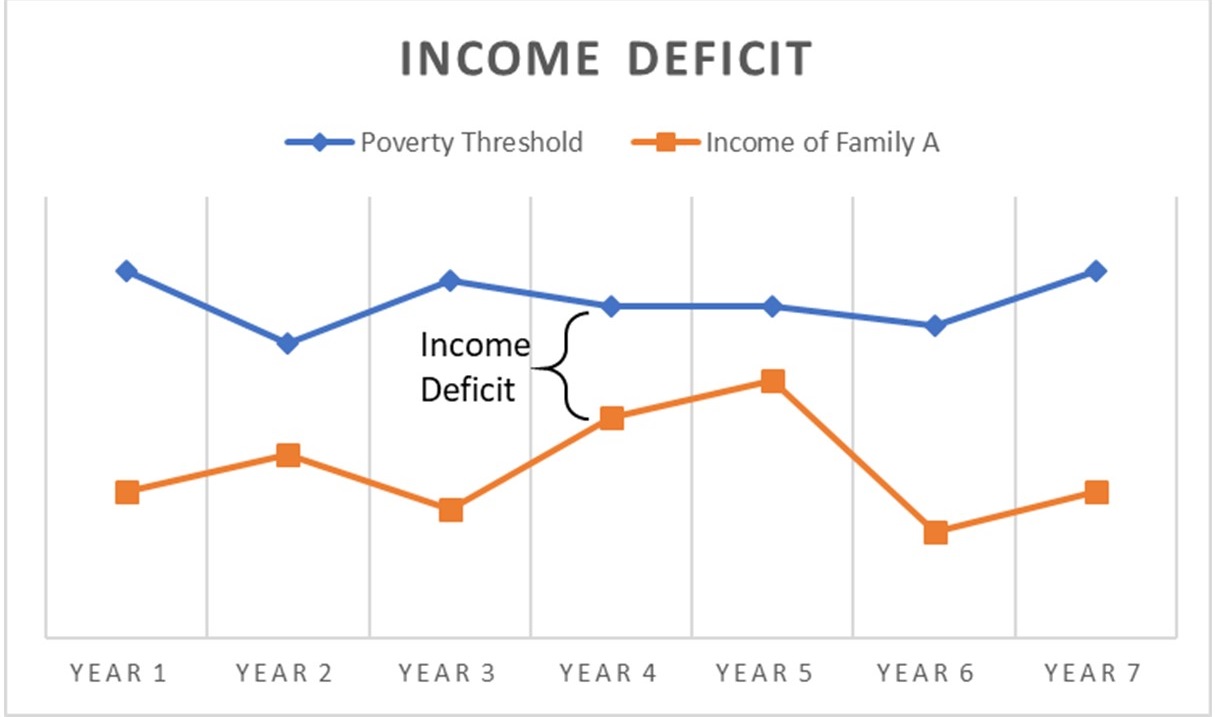Income deficit on:
[Wikipedia]
[Google]
[Amazon]
Income deficit is the difference between a single person or family's

* Hurst, Charles. ''Social Inequality: forms, causes, and consequences''
US Census BureauAmerica's Deficit, the World's Problem
Measurements and definitions of poverty Welfare economics Personal financial problems {{econ-problem-stub
income
Income is the consumption and saving opportunity gained by an entity within a specified timeframe, which is generally expressed in monetary terms. Income is difficult to define conceptually and the definition may be different across fields. Fo ...
and its poverty threshold
The poverty threshold, poverty limit, poverty line or breadline is the minimum level of income deemed adequate in a particular country. The poverty line is usually calculated by estimating the total cost of one year's worth of necessities for t ...
or poverty line, when the former is exceeded by the latter. Data on the income deficits of various members of a population allow for the construction of one type of measurement of income inequality
There are wide varieties of economic inequality, most notably income inequality measured using the distribution of income (the amount of money people are paid) and wealth inequality measured using the distribution of wealth (the amount of we ...
in that population. Individuals or families that fall below the line are considered to be in poverty
Poverty is the state of having few material possessions or little income. Poverty can have diverse
whereas families that fall above are not. The income deficit is one of two measures that are used to determine a person or family's income distance from the poverty threshold, the other being a ratio rather than a difference.
The net income deficit consists largely of income payments and receipts on capital, as well as cross-border labour income (compensation of employees). Given the relatively small level of net cross-border labor income payments, there are two key drivers of the net income deficit: the level of net foreign liabilities being financed and the yield on those liabilities.https://treasury.gov.au/sites/default/files/2019-03/round6.pdf

Poverty threshold
The poverty threshold in the U.S. is updated each year by theU.S. Census Bureau
The United States Census Bureau (USCB), officially the Bureau of the Census, is a principal agency of the U.S. Federal Statistical System, responsible for producing data about the American people and economy. The Census Bureau is part of the ...
. The number is adjusted according to inflation
In economics, inflation is an increase in the general price level of goods and services in an economy. When the general price level rises, each unit of currency buys fewer goods and services; consequently, inflation corresponds to a reduct ...
to reflect the updated cost of living in particular areas. In 2016 12.7% of Americans were living below the poverty threshold. Poverty thresholds depend on the number of people living in the household.
Problems with income deficit
There is still debate as to how to accurately calculate poverty, and which factors would be the most appropriate. While the poverty line reflects the general circumstances of a household (specifically, number of people and location), it does not capture the household's individual circumstances, such as health problems. Therefore, supplemental poverty measures are also used to better represent the data.US Income Deficit
In the United States, the census bureau separates data collected into several different categories. Each category is then separated even further by number of children, age of children, yearly salary, social security income, et cetera. The data below shows the average of each subcategory within the three larger ones. Data is from the year 2016. * Families have a mean income deficit of $10,505. * Married-couple families have a mean income deficit of $11,139. * Families with female householder and no male present have a mean income deficit of $9,991.References
* Hurst, Charles. ''Social Inequality: forms, causes, and consequences''
External links
US Census Bureau
Measurements and definitions of poverty Welfare economics Personal financial problems {{econ-problem-stub